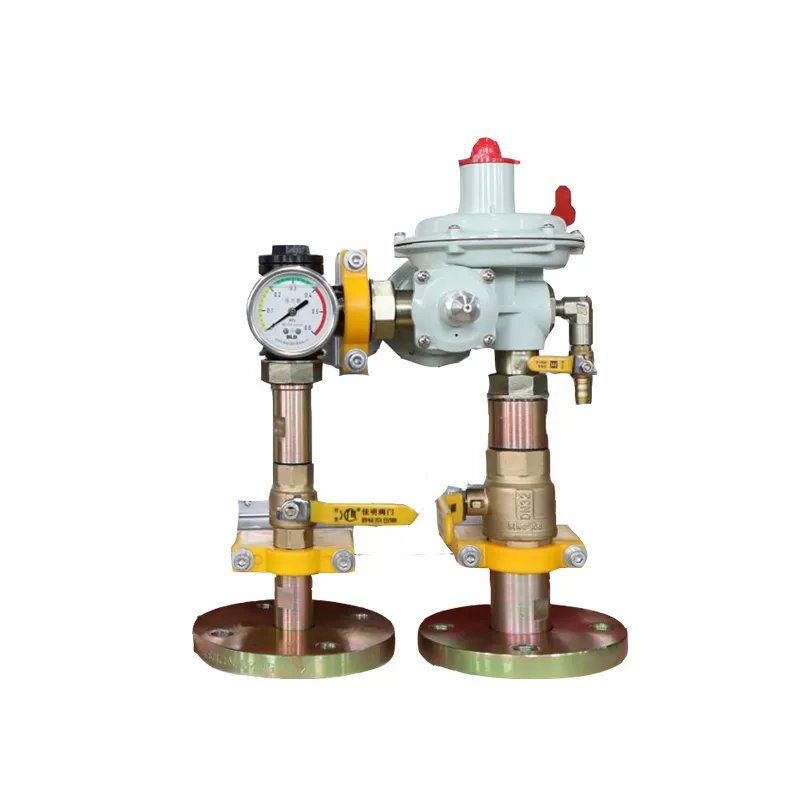
Nov . 08, 2024 16:07
Back to list
gas pressure reducing valve
Understanding Gas Pressure Reducing Valves Functionality and Importance
Gas pressure reducing valves (PRVs) play a critical role in various applications involving gas distribution systems. These devices are essential for maintaining consistent gas flow and pressure, ensuring safety and efficiency in industrial, commercial, and residential settings. In this article, we will explore the functionality, types, applications, and importance of gas pressure reducing valves.
What is a Gas Pressure Reducing Valve?
A gas pressure reducing valve is a mechanical device designed to lower the pressure of gas from a higher pressure source to a reduced pressure suitable for safe and reliable use. The primary function of a PRV is to control and stabilize the downstream pressure, which is crucial for equipment and appliance performance. Without a properly functioning PRV, the risk of overpressure can lead to equipment failure, gas leaks, or even catastrophic incidents.
How Do Gas Pressure Reducing Valves Work?
Gas pressure reducing valves operate on a simple principle they adjust the flow of gas to maintain a constant downstream pressure. The valve typically consists of a diaphragm, spring, adjusting screw, and inlet/outlet connections. When gas enters the valve, it pushes against the diaphragm, which moves against the spring tension.
As the pressure downstream increases, the diaphragm rises, causing the opening to narrow, which in turn reduces the gas flow until the downstream pressure is stabilized to the pre-set level. Conversely, if the downstream pressure drops, the spring will push the diaphragm back down, allowing more gas to flow through the valve. This self-regulating design makes PRVs highly effective in managing pressure fluctuations.
Types of Gas Pressure Reducing Valves
There are several types of gas pressure reducing valves, each tailored to specific applications
1. Single-stage Regulators These are designed to reduce high inlet pressure to a lower outlet pressure in one step. They are typically used in applications where the pressure drop does not exceed a certain limit.
gas pressure reducing valve

2. Two-stage Regulators These devices offer a more gradual reduction in pressure, making them ideal for applications that require stable outlet pressure despite fluctuations in the inlet pressure.
3. Back-pressure Regulators These types are used to maintain a specific pressure level upstream of the valve, making them essential for applications requiring precise pressure control.
4. Automatic and Manual Regulators Automatic regulators adjust the pressure without any human intervention, while manual regulators require input from an operator to adjust settings.
Applications of Gas Pressure Reducing Valves
PRVs are widely used across various sectors. In residential settings, they are essential for gas appliances such as stoves, water heaters, and heating systems, ensuring safe operation and preventing damage. In industrial applications, PRVs help regulate gas pressure for boilers, furnaces, and various manufacturing processes.
Additionally, PRVs are crucial in natural gas distribution systems, where they ensure that gas delivered to customers remains at safe and consistent pressure levels. They are also used in laboratories and research facilities where precise gas flow is required for experiments.
Importance of Gas Pressure Reducing Valves
The importance of gas pressure reducing valves cannot be overstated. They enhance safety by preventing hazardous overpressure situations, which can lead to accidents or explosions. PRVs also contribute to system efficiency by ensuring optimal operating conditions for equipment and appliances, reducing wear and tear, and preventing costly repairs.
In conclusion, gas pressure reducing valves are vital components in gas distribution systems, providing safety, stability, and efficiency. Their ability to control and manage gas pressure ensures that applications across various industries operate smoothly and safely. Understanding the functionalities, types, and applications of PRVs is essential for anyone involved in gas systems management, whether in industrial, commercial, or residential capacities.
Next:
Latest news
-
Safety Valve Spring-Loaded Design Overpressure ProtectionNewsJul.25,2025
-
Precision Voltage Regulator AC5 Accuracy Grade PerformanceNewsJul.25,2025
-
Natural Gas Pressure Regulating Skid Industrial Pipeline ApplicationsNewsJul.25,2025
-
Natural Gas Filter Stainless Steel Mesh Element DesignNewsJul.25,2025
-
Gas Pressure Regulator Valve Direct-Acting Spring-Loaded DesignNewsJul.25,2025
-
Decompression Equipment Multi-Stage Heat Exchange System DesignNewsJul.25,2025

